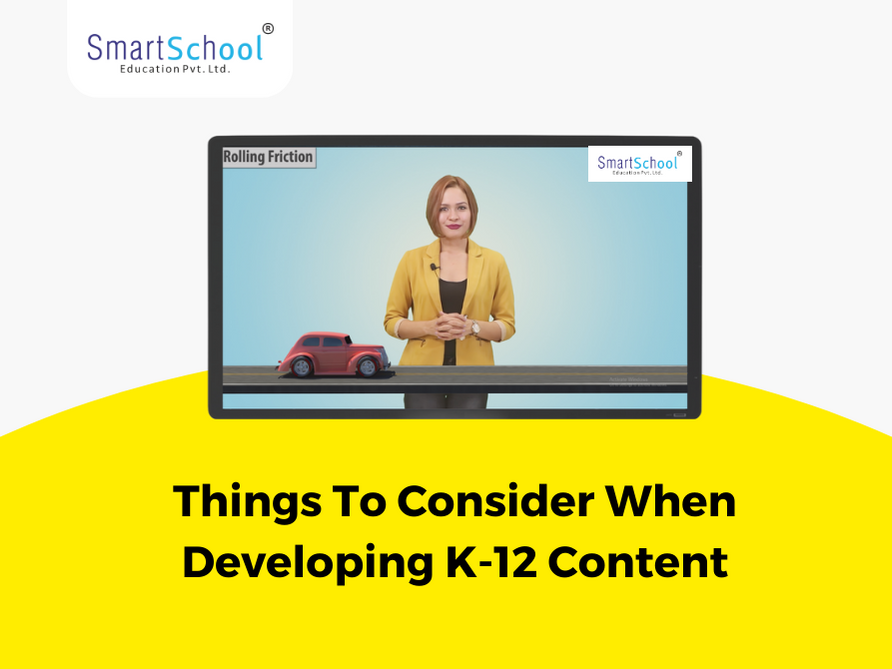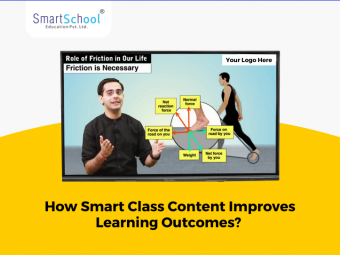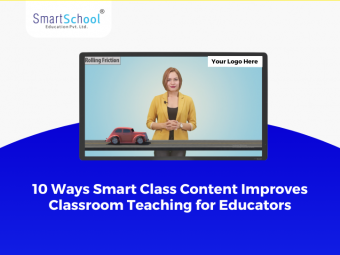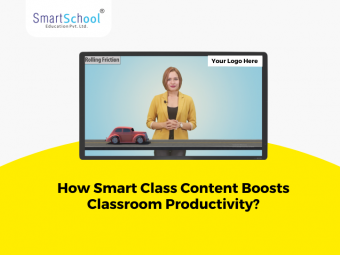
E-learning has become an integral part of education, particularly in the K-12 sector. With the advancement of technology and the need for flexible learning options, developing high-quality e-learning content for K-12 students has become crucial.
However, creating effective e-learning content requires careful consideration of various factors to ensure optimal learning outcomes.
6 Things To Consider When Developing K-12 Content
In this blog, we will explore six important things to consider when developing K-12 content for e-learning platforms.
1. Curriculum Alignment:
One of the primary considerations when developing e-learning content for K-12 students is aligning it with the curriculum. Content developers must thoroughly understand the curriculum guidelines, learning objectives, and educational standards for each grade level.
By ensuring alignment, the e-learning content can effectively support classroom instruction and help students meet their academic goals.
2. Engaging and Interactive Elements:
To captivate young learners' attention and enhance their learning experience, incorporating engaging and interactive elements is crucial. This can include multimedia resources like videos, animations, and interactive quizzes or games.
Interactive elements not only make the learning process more enjoyable but also facilitate active participation and deeper understanding of the concepts being taught.
3. Differentiated Instruction:
Every student has unique learning needs and abilities. When developing K-12 e-learning content, it is essential to incorporate differentiated instruction strategies to cater to diverse learners.
Content developers should consider providing multiple pathways to learning, including options for visual, auditory, and kinesthetic learners. This approach ensures that students with varying learning styles and abilities can grasp the content effectively.
Read More: Developing a Learning App? Step-By-Step Guide To Launch Your Own K-12 App
4. Accessibility and Inclusivity:
E-learning content should be accessible and inclusive for all students, including those with disabilities or special needs. Content developers must adhere to accessibility guidelines, such as providing closed captions for videos, alt text for images, and compatibility with screen readers.
Considering the needs of all learners and making necessary accommodations in the content ensures that every student can fully participate and benefit from e-learning.
5. Continuous Evaluation and Improvement:
Developing e-learning content is an ongoing process that requires continuous evaluation and improvement. Content developers should gather feedback from teachers, students, and parents to assess the effectiveness of the content.
Regular evaluation helps identify areas of improvement and enables content developers to make necessary adjustments to enhance the learning experience.
Additionally, staying up-to-date with emerging educational trends and incorporating new technologies can further enhance the quality of K-12 e-learning content.
6. User-Friendly Navigation and Interface:
Ensure that your e-learning content is easy to navigate and has a user-friendly interface. Use a consistent layout and design throughout the course, including intuitive navigation menus and buttons.
Provide clear instructions on how to access different sections, activities, and resources. Make sure the course is compatible with various devices and screen sizes, and consider accessibility guidelines to accommodate learners with disabilities.
How to Develop K-12 Content?
When it comes to developing K-12 educational content, there is often a choice between creating content from scratch or using whitelabeled content. While both options have their merits, opting for whitelabeled content can provide several advantages that make it a more efficient and cost-effective approach.
Firstly, utilizing whitelabeled content saves valuable time and resources. Developing high-quality educational materials requires extensive research, curriculum alignment, instructional design, content creation, and quality assurance.
This entire process can be time-consuming and requires a team of subject matter experts, curriculum specialists, graphic designers, and multimedia developers.
By choosing whitelabeled content, educators and content developers can bypass these steps, as the materials have already been created, reviewed, and refined by experts in the field.
This allows for quicker deployment and frees up time and resources to focus on other aspects of educational development.
What is a Whitelabel Content?
Whitelabel content refers to content that is created by one party and then rebranded or resold by another party as their own. There are several benefits to opting for whitelabel content instead of developing content from scratch, as well as some drawbacks to consider.
Let's explore both perspectives:
Drawbacks of developing content from Scratch:
1. Time and Resource Intensive:
Creating content from scratch requires significant time, effort, and resources. You'll need to invest in content development, research, writing, editing, and design. This process can be demanding, particularly if you don't have the necessary expertise in-house.
2. Uncertainty in Quality:
When developing content internally, the quality of the final product may vary depending on the skill level and experience of your team. There is a risk of inconsistencies in tone, style, and accuracy. This can impact the overall impression of your brand.
3. Learning Curve:
If content creation is not your core competency, developing from scratch may involve a learning curve. You and your team might need to acquire new skills, familiarize yourselves with industry standards, or experiment to find the right approach. This learning period can delay your content production.
4. Higher Costs:
While developing content internally can potentially save costs in the long run, it often requires upfront investments in talent, tools, and resources. Additionally, mistakes made during the learning process can result in additional expenses.
Benefits of Whitelabel Content:
1. Time and Cost Savings:
Developing high-quality content from scratch can be time-consuming and expensive. Whitelabel content allows you to leverage existing content that has already been created, saving you the effort and cost associated with creating everything from the ground up.
2. Expertise and Quality Assurance:
Whitelabel content is often created by specialized professionals or agencies with expertise in a specific domain. By using their pre-existing content, you can tap into their knowledge and experience, ensuring that the content you offer is of high quality.
3. Faster Go-to-Market:
Since whitelabel content is readily available, you can launch your product or service quickly. This can be especially beneficial when you're operating in a fast-paced industry or need to meet tight deadlines.
4. Established Reputation:
If you choose whitelabel content from reputable sources or well-known brands, you can leverage their established reputation to enhance your own brand image. This association with trusted content creators can provide a level of credibility to your offerings.
SmartSchool's White Label Smart Class Solution
Get an interactive digital learning content from nursery to class 12th, containing more than 50,000+ modules, 10,000+ interactive games and 2 million learning resources white-labelled and optimised for your set of devices, all white labelled in your own institute’s brand name.
Features of SmartSchool's White Label Smart Class Solution
1. 50k+ HD Videos - Animated and Anchor Based Videos: The Whitelabel Smart Class Solution includes a vast collection of high-definition videos, both animated and anchor-based. These videos cover various subjects and topics, providing engaging visual content to enhance students' understanding.
2. 2 Million+ Learning Resources: The solution offers access to a comprehensive library of over 2 million learning resources. These resources include textbooks, study materials, reference guides, and more, providing a rich repository of educational content for students.
3. Huge Question Bank Of 1,00,000+ Questions: Institutes can leverage the Whitelabel solution's extensive question bank, consisting of over 100,000 questions. This enables institutes to create assessments, quizzes, and practice tests tailored to their curriculum, facilitating effective learning and evaluation.
4. 3,000+ Publishers Mapped For Personalized Learning: The Whitelabel Smart Class Solution collaborates with over 3,000 publishers, allowing institutes to personalize the learning experience for their students.
5. 10,000+ Interactive Tools For Revision: The solution provides a wide array of interactive tools designed to support student revision. These tools, such as flashcards, quizzes, and interactive exercises, engage students in active learning and help reinforce their knowledge.
6. CBSE, ICSE and All Major Indian State Boards: The Whitelabel Smart Class Solution supports the curriculum of major Indian boards, including CBSE, ICSE, and various state boards. Institutes can customize the solution to align with their specific board's syllabus, ensuring accurate and relevant content delivery.
7. Bilingual Content - Both In Hindi and English: The solution offers bilingual content, catering to the linguistic needs of students. Institutes can present the content in both Hindi and English, allowing students to learn in their preferred language and promoting inclusivity.
8. Real-Time Tracking of Student Performance: The Whitelabel solution enables real-time tracking of student performance. Institutes can monitor individual student progress, identify areas of improvement, and provide timely interventions to support their learning journey effectively.
9. Monitor Progress and Content Usage Report: The solution generates detailed reports on student progress and content usage. Institutes can access comprehensive analytics and insights on student engagement, performance trends, and content utilization, enabling data-driven decision-making.
10. Special Learning Zone for Dyslexia Students: The Whitelabel Smart Class Solution includes a special learning zone designed specifically for dyslexic students. It provides tailored resources and features that support their unique learning needs, fostering an inclusive educational environment.
11. Real Life Videos and Science Experiments: The solution incorporates real-life videos and science experiments to provide practical and hands-on learning experiences. These resources enable students to connect theoretical concepts with real-world applications, enhancing their understanding and interest in the subjects.
12. Easily Switch Between Offline and Online Content Mode: The Whitelabel Smart Class Solution allows seamless switching between offline and online content modes. This flexibility ensures uninterrupted access to educational resources, even in areas with limited internet connectivity.
13. Diagrams, Mapwork, History Timelines & Toppers Answers: The solution offers additional resources such as diagrams, mapwork, history timelines, and answers from top-performing students. These resources support visual learning, historical understanding, and provide insights into exemplary answers.
14. HOTs, Previous Year Question Papers & Formulae Master: The Whitelabel Smart Class Solution provides additional exam preparation resources, including Higher Order Thinking Skills (HOTs), previous year question papers, and a formulae master. These resources help students prepare effectively for their examinations.
To know more, call 8927089270.




Leave your comment